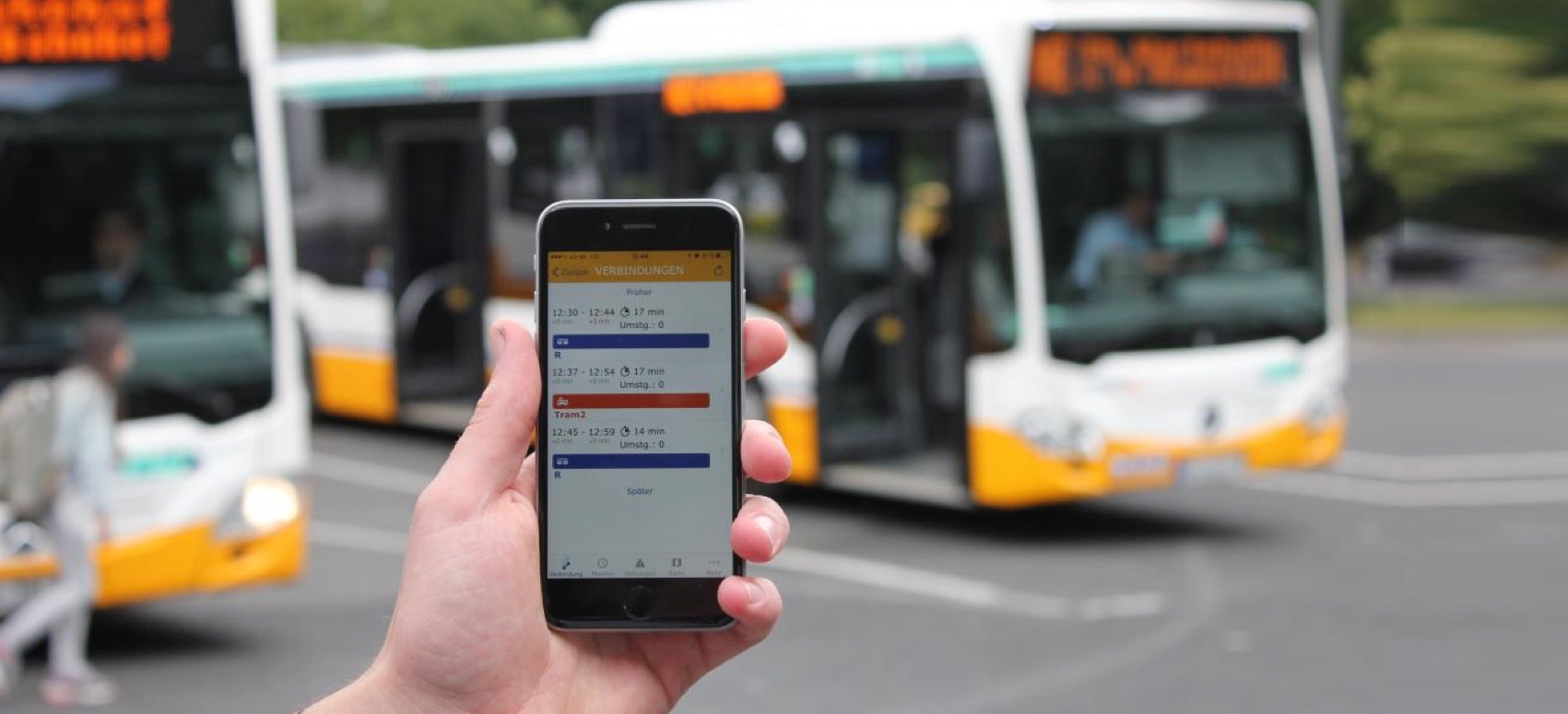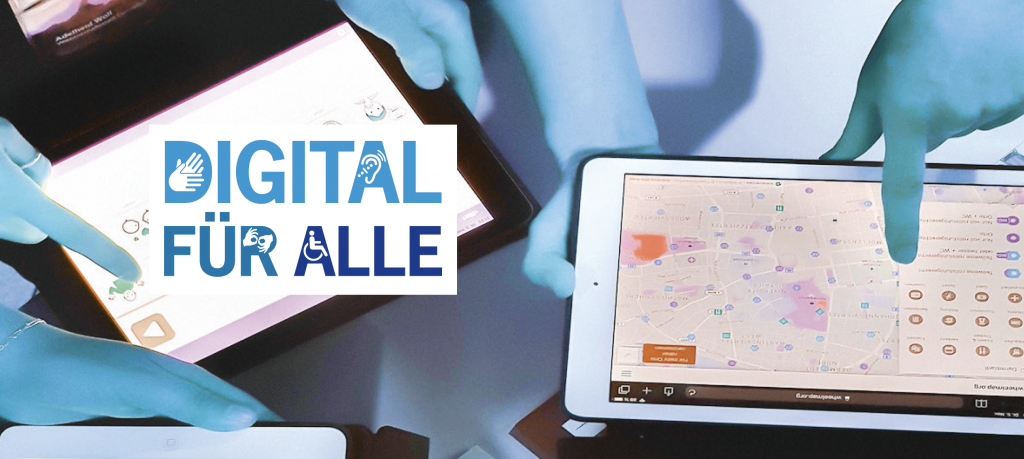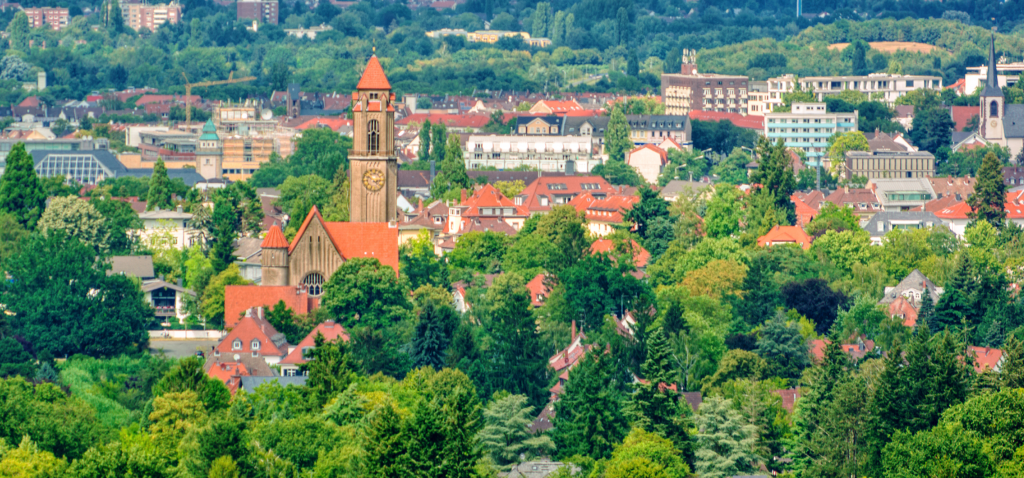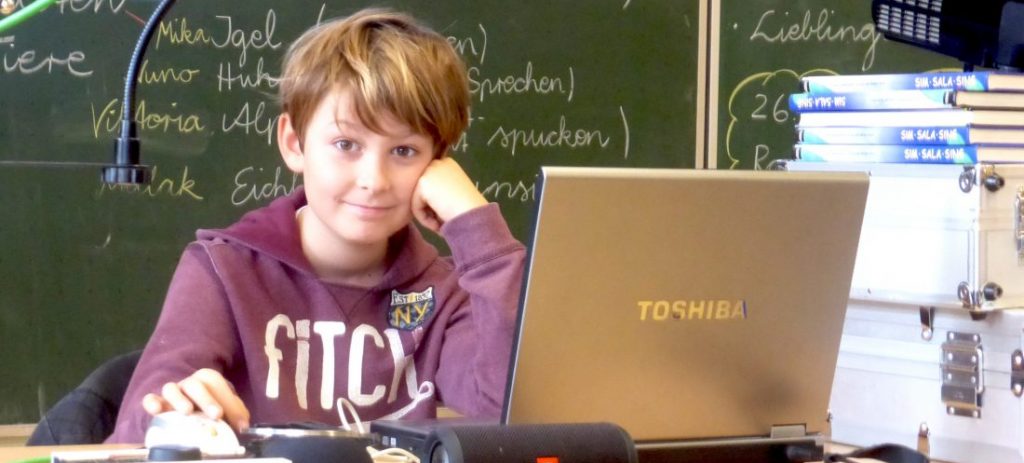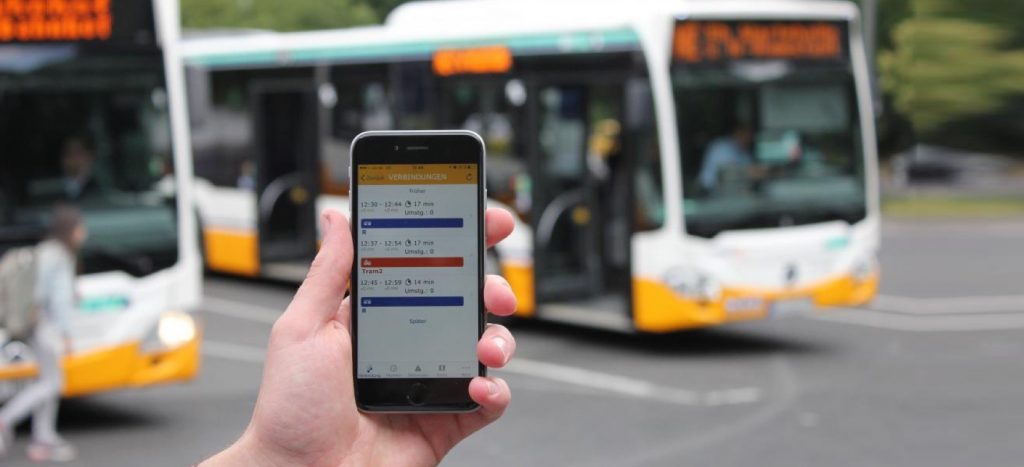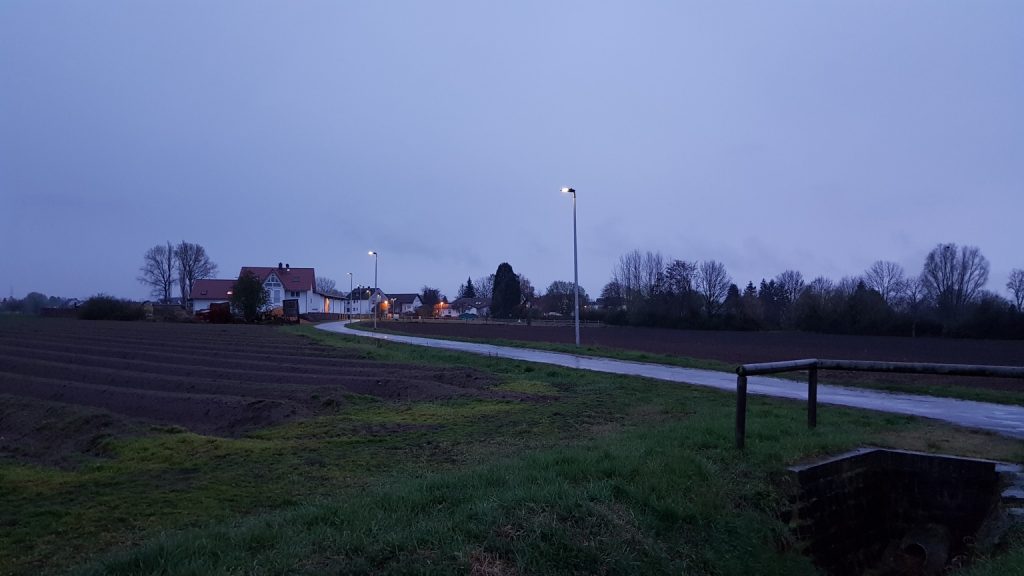The video on the subject
Getting ahead of the rest

Mit dem Laden des Videos akzeptieren Sie die Datenschutzerklärung von YouTube.
Mehr erfahren
thanks to a state-of-the-art fibre optic network
As the red arrow on the display shows, it will be at least 40 seconds until the traffic lights at the corner of Bismarckstraße and the B3 turn green. Drivers can confidently let their gaze wander into the surroundings, knowing that an acoustic signal will draw their attention back to the road. When the tone sounds, the display starts a countdown: seven, six, five, four, three, two, one second to green. The traffic lights change. Get into gear – and let’s get moving. For almost a year, the Enlighten app made driving through Darmstadt a much more relaxing experience. Drivers using this traffic light phase assistant would always know how long it would take for the next set of traffic lights to turn green. Then came the coronavirus pandemic that the start-up providing this service did not survive. A new traffic light phase assistant is now being tested. This will use real-time traffic data generated by the sensors installed at the traffic lights. With the help of the app, all road users – trams, buses, cars or bicycles – can find out the best speed to go at for a green wave.
Darmstadt is one of the few German cities that meet all the infrastructural requirements for such an app to work at all. This is one of many reasons why Darmstadt was given its role as a ‘Smart City’ so that it could be used as a real-world laboratory in which project partners test their digital concepts for practicality and develop them to market maturity. Science City Darmstadt regulates its traffic via its own state-of-the-art fibre optic network. ‘This puts us ahead of everyone else in Germany’, says Ralf Tank, an employee of the Mobility department. According to Tank, the example of the private app provider has also shown how important it is for such systems to remain in the hands of the municipality. ‘After all, we benefit from the added value provided by such applications – when traffic flows and exhaust fumes are reduced. And it was precisely due to solid foundations that were already in place in Darmstadt that the app worked very, very well’, says Tank.
Managing the city’s
many commuters
Around 160 traffic lights send up to 20 data sets per second, and around 380 cameras transmit their images. The local public transport system communicates directly with traffic lights using three messages: ‘I’m almost there’, ‘I’m there’ and ‘I’ve driven through’. All this information is collected in real time in the city traffic computer, which also regulates in real time the flows of anyone using the roads, including pedestrians, public transport and private vehicles. ‘Without this network, it would be nearly impossible to direct the roughly 95,000 commuters coming into the city, 25,000 commuters going through the city and a total of around 163,000 people who have to travel from A to B within the city every day’, says Tank. ‘TomTom works with a ten-minute delay, Google Maps is accurate to the minute, and we work to the second.’
All data is stored on the open-data platform for ten years – which makes Darmstadt an interesting case study for numerous academic papers. If this traffic data is soon combined and evaluated with the information from the expanded sensor network and the expanded environmental sensor network, it will also be possible to control traffic based on environmental conditions and also serves to protect the environment. Conclusions cannot be drawn from any stored data as to who was where in Darmstadt at what time. The images taken by the cameras are either infrared or so blurred that neither people nor licence plates are recognisable. The images themselves are not stored. For traffic management and future forecasts of traffic flows in terms of environmental impact, only the number of cars or cyclists crossing an intersection at what point in time and how the traffic lights were switched are of interest.
In Darmstadt, there are already clear priorities in place when it comes to traffic management. ‘Public transport prioritises fully adhering to schedules’, says Tank. To keep private vehicle traffic flowing as smoothly as possible, the system adapts the traffic light circuits to how dense traffic volume is. For example, the green phase at a traffic light can last 17 seconds, then 12 seconds and then 24 seconds again, depending on how many cars are on the road as detected by the camera or contact loop. But let’s not forget pedestrians – especially the youngest ones. ‘Primary schoolchildren often simply start crossing the road after 40 seconds, no matter what the traffic lights show’, says Tank. That’s why pedestrians don’t have to wait more than 40 seconds at traffic lights on Darmstadt’s school routes.
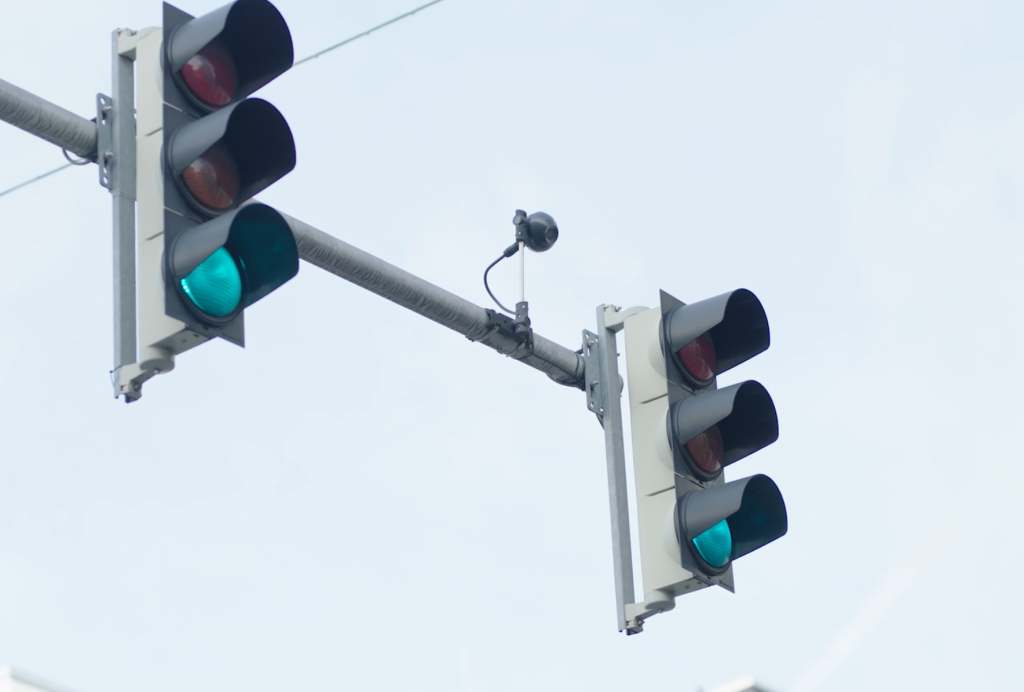
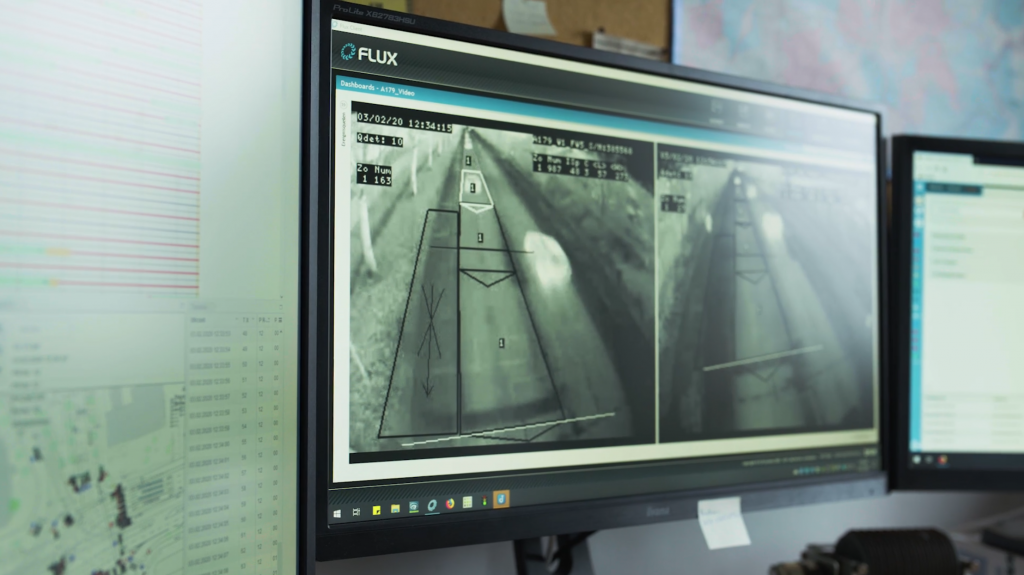
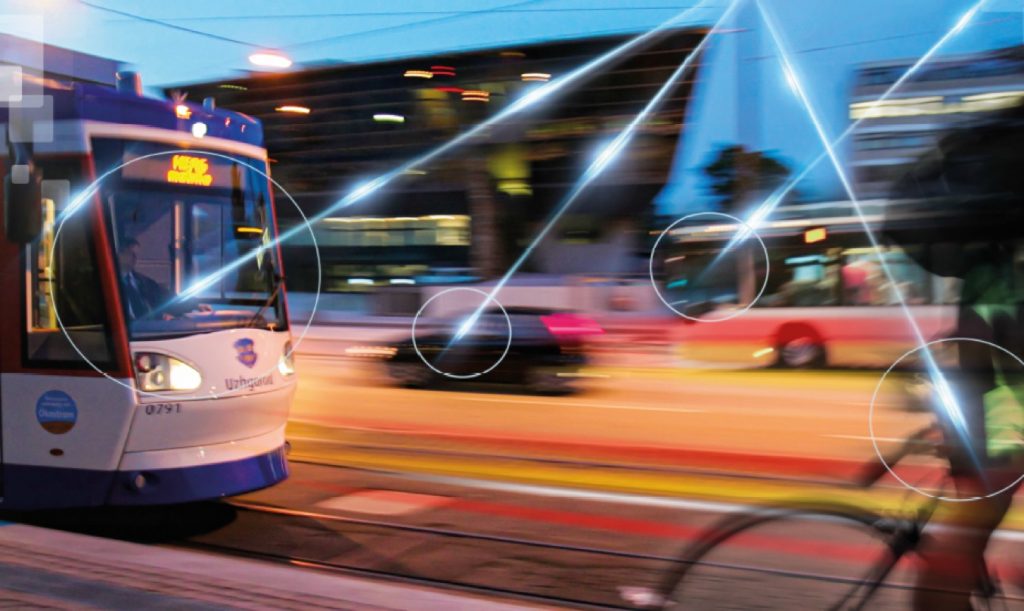
Hop off the tram onto a rental bike or into a shared car
Traffic management in Darmstadt – it’s a constant balancing act of differing interests. And these interests can also change while people are on the go throughout the city – from the bus and train to a taxi, rental bike or shared car. It’s lunchtime and the HEAG mobilo app is showing that there are ‘8 bikes available’ at the darmstadtium’s Call a Bike station. This caught the attention of a young man getting off the line 3 tram outside the palace. He heads straight for the rental bikes and is soon speeding off on one of them. The app, which is operated by a Darmstadt-based transport company, shows bus and train connections from A to B – but the real highlight is the map feature. This shows public transport vehicles moving in real time, allowing users to see where which train is at any time and whether they will be able to make their connection. The map also shows all stations for Call a Bike and the car-sharing provider book-n-drive, as well as all taxi ranks. Even if you’re not close to a station that will take you to your destination, there is no reason to avoid using public transport. If you click on the relevant button, you will be taken directly to the Call a Bike or book-n-drive website or you can call for a taxi.
Dynamic passenger information at your fingertips
Patrik Romstätter is Head of Communications and Sales at HEAG mobilo. When he and his team planned their app, user-friendliness was a top priority. ‘We wanted users to have dynamic passenger information at their fingertips’, says Romstätter. Jens Schiwy and his team in the field of traffic telematics helped with the implementation. Together, they considered which functions would be useful without compromising the usability of the app. So the search for connections was and still is a priority. In the summer of 2018, the interfaces with car-sharing and bike-rental providers were added. All other additional services, such as warnings for traffic disruptions, a departure monitor or directions for the visually impaired, can be selected via menu items or simply ignored.
By popular demand, another major step was taken at the start of 2021 with the addition of the mobile phone ticket function, which allows users to buy tickets in three easy steps. The app has been downloaded almost 70,000 times to date and has around 10,000 users per month.
